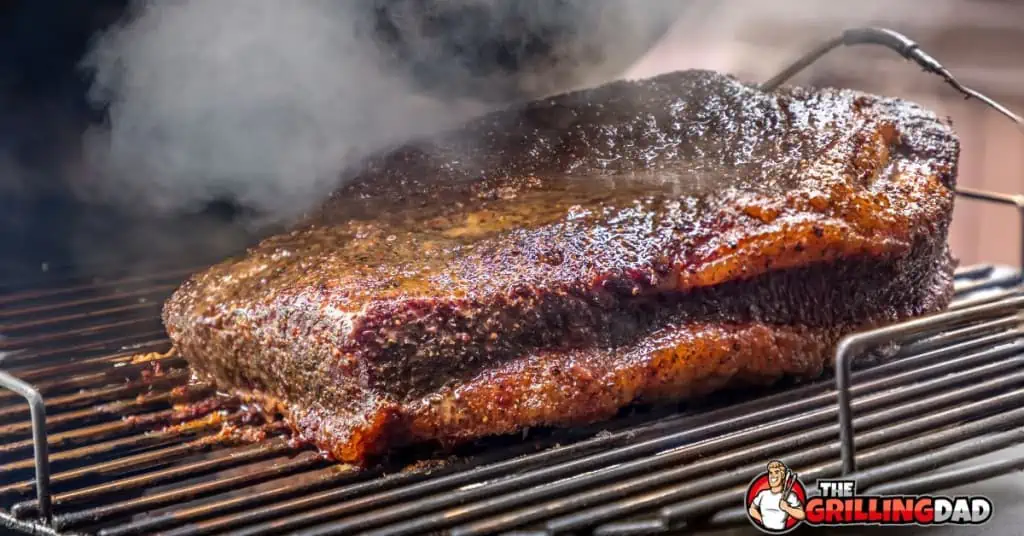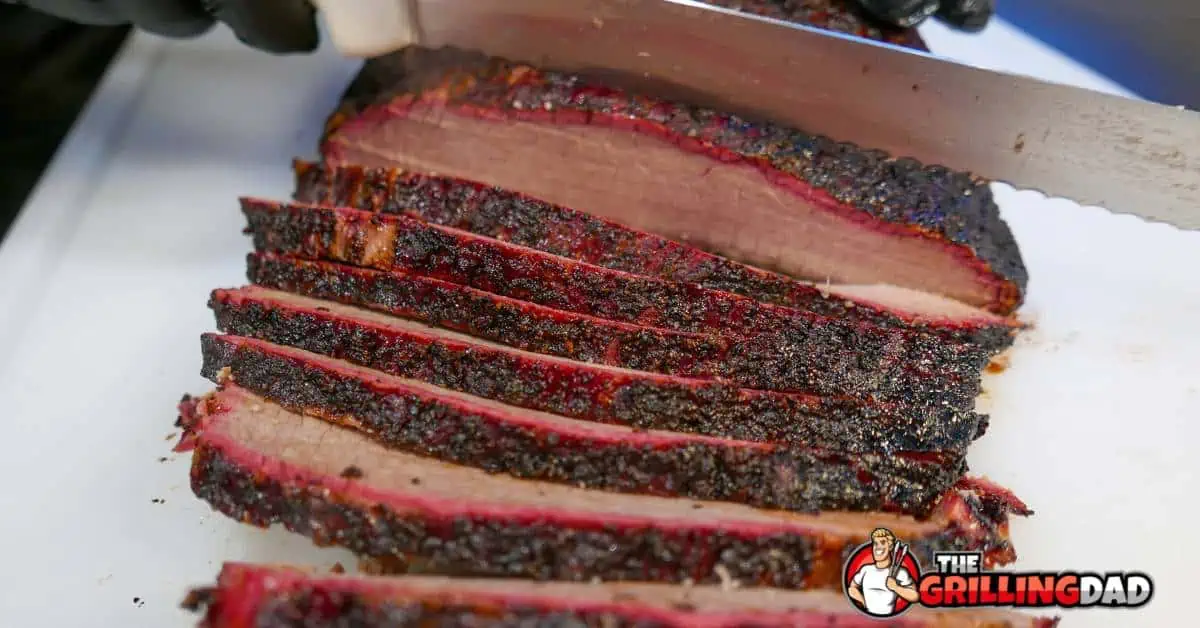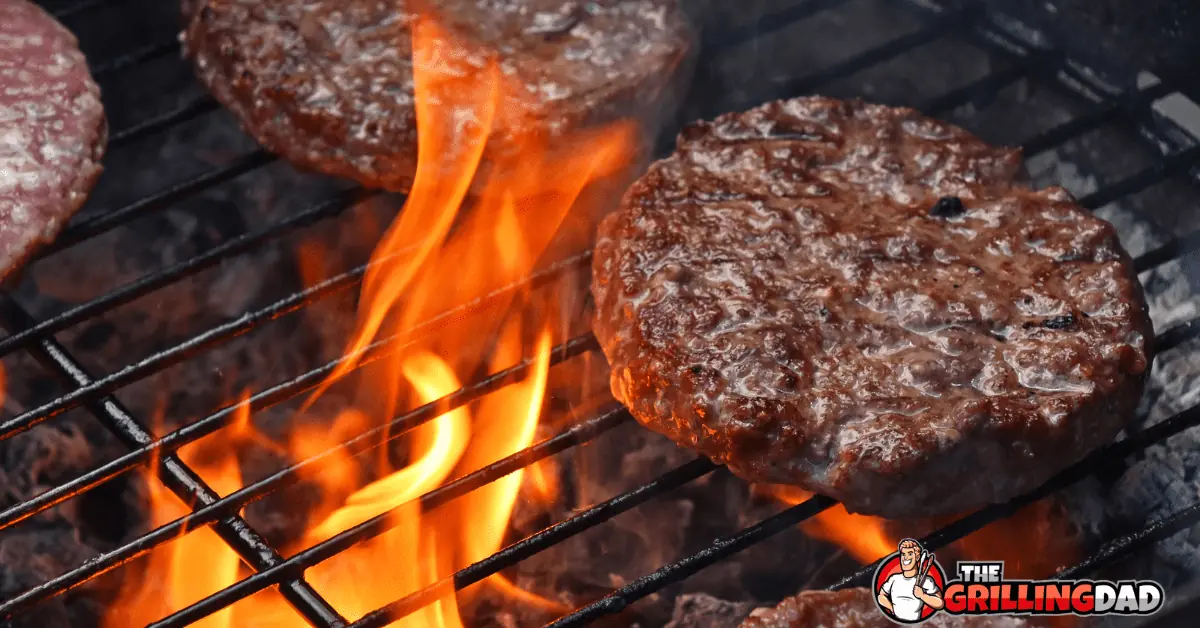The GrillingDad Answer: A temperature probe should be placed in the thickest part of the brisket, as close to the center as you can manage. This is the last place the meat will cook, so as long as the temperature here is sufficient, your brisket should be ready to eat.
One of the major factors in making a delicious brisket is ensuring you take your brisket off the grill at the right time. You’ll know it’s the right time thanks to a temperature probe. But where should you put a temperature probe in your brisket?
Read on to learn more about where to probe a brisket and things you should be aware of!
Jump to Section
Why Probe a Brisket?
As pitmasters, we know that cooking brisket is an art that requires patience, practice, and precision. One of the most important aspects of cooking brisket is monitoring its internal temperature, which is why probing a brisket as it cooks is crucial.
The Importance of Temperature
Probing a brisket allows us to monitor its internal temperature and ensure that it’s cooked to perfection. The internal temperature of a brisket is directly related to its tenderness and moisture.
When the brisket reaches the proper internal temperature, the collagen in the meat breaks down, making it tender and juicy. However, if the internal temperature is too low, the collagen won’t break down, resulting in tough and chewy meat.
Probing a brisket also allows us to monitor the temperature of the meat during the cooking process. When smoking a brisket, it’s common to experience a stall, where the internal temperature of the meat stops rising for several hours.
By monitoring the internal temperature, we can determine when the stall is over and the meat is ready to be removed from the smoker.
What Happens When You Overcook or Undercook a Brisket?
Overcooking or undercooking a brisket can have disastrous consequences. If you overcook a brisket, the meat will become dry and tough, and the fat will render out, leaving the meat flavorless.
On the other hand, if you undercook a brisket, the collagen won’t break down, resulting in tough and chewy meat.

Where to Probe a Brisket?
Knowing where to probe is crucial to ensuring your brisket is cooked to perfection.
Locating the Thickest Part of the Brisket
The first step is to locate the thickest part of the meat. This is typically where the point and the flat meet, and it’s where you’ll get the most accurate temperature reading.
If you are cooking just one section (the flat or the point) lay your brisket on the grill and squat down until it’s eye level to find the thickest part.
The Best Tools for Probing a Brisket
To get an accurate temperature reading, you’ll need a reliable thermometer. We recommend using a thermocouple or a digital instant-read thermometer. These tools are easy to use and will give you an accurate reading in just a few seconds.
If your grill or smoker comes with a built-in thermometer, then place it in the meat at the same time you place the meat on the grill.
Horizontal vs. Vertical Probing
When probing a brisket, you can either insert the probe horizontally or vertically. Horizontal probing is the best method, as it will give you a more accurate reading of the internal temperature of the meat.
How Deep to Insert the Probe
When inserting the probe into the brisket, you’ll want to go deep enough to get an accurate reading but not so deep that you hit the bone (or the probe comes out on the other side of the meat). We recommend inserting the probe at least 1-2 inches into the meat depending on the size of your brisket.
Probe Placement for Tenderness
If you’re looking to test the tenderness of the brisket, you’ll want to probe it in different areas. The ideal temperature for a tender brisket is around 195°F. If you find an area that is difficult to probe (and not the right temperature) then you know to keep the brisket on the grill just a little bit longer.
When Should You Probe a Brisket?
As we all know, brisket is a tough cut of meat that requires low and slow cooking to achieve the desired tenderness and flavor. But how do we know when it’s done? That’s where probing comes in.
Of course, if your grill comes with a built-in probe, we recommend placing the probe in your brisket as you begin cooking. This will allow you to monitor the temperature of the brisket the whole way through.
If you don’t have a built-in probe, we highly recommend investing in a grill that has the capability if you plan to be a serious smoker.
For those without a built-in probe, keep reading.
The Stall
First, let’s talk about the stall. The stall is a phenomenon that occurs when cooking a brisket, where the internal temperature of the meat plateaus or even drops for several hours.
You’ll likely notice the stall when you probe your brisket twice, but get the same temperature, and no this isn’t a mistake. If you think your brisket is in a stall, wait another hour before checking the temperature again.
If you are sure your brisket is in the stall, plan to probe it once per hour so you will be aware of when it leaves the stall.
After Stall
After the stall, you should plan to probe the brisket around the time you expect it to be done. Not sure how long to cook your brisket? Check out our guide How Long to Smoke a Brisket Per Pound. Remember, how long your brisket will take depends on its weight and the temperature you have your smoker/grill set to.
Once you have passed the time your brisket was supposed to be done, we recommend probing the brisket every 30 minutes to one hour and keeping a close eye on it once it gets close to that magic 195°F.
How Often Should You Probe a Brisket?
As we mentioned above, you should leave your brisket alone for as long as possible. This means putting your brisket in the smoker and just letting it be for at least 6-8 hours.
We also recommend calculating the approximate time your brisket should be done. Plan to probe your brisket either an hour before, at, and an hour after this time(or until it’s done!)
Once your brisket begins to get close to 175°F or higher, we recommend probing it every half hour to ensure it finishes cooking but doesn’t overcook.





